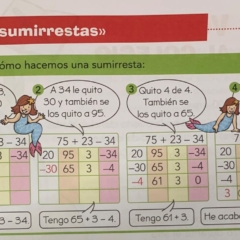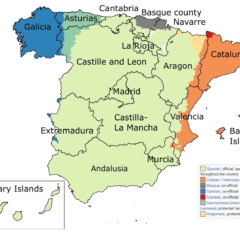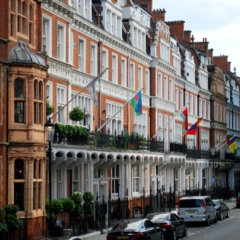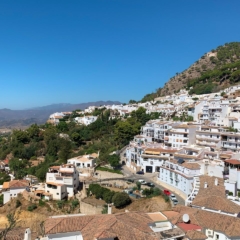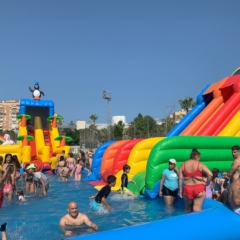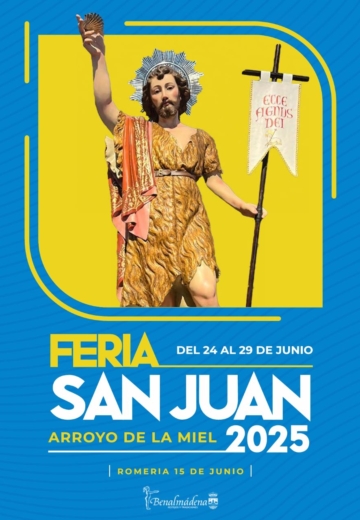Choosing the right school for your kids
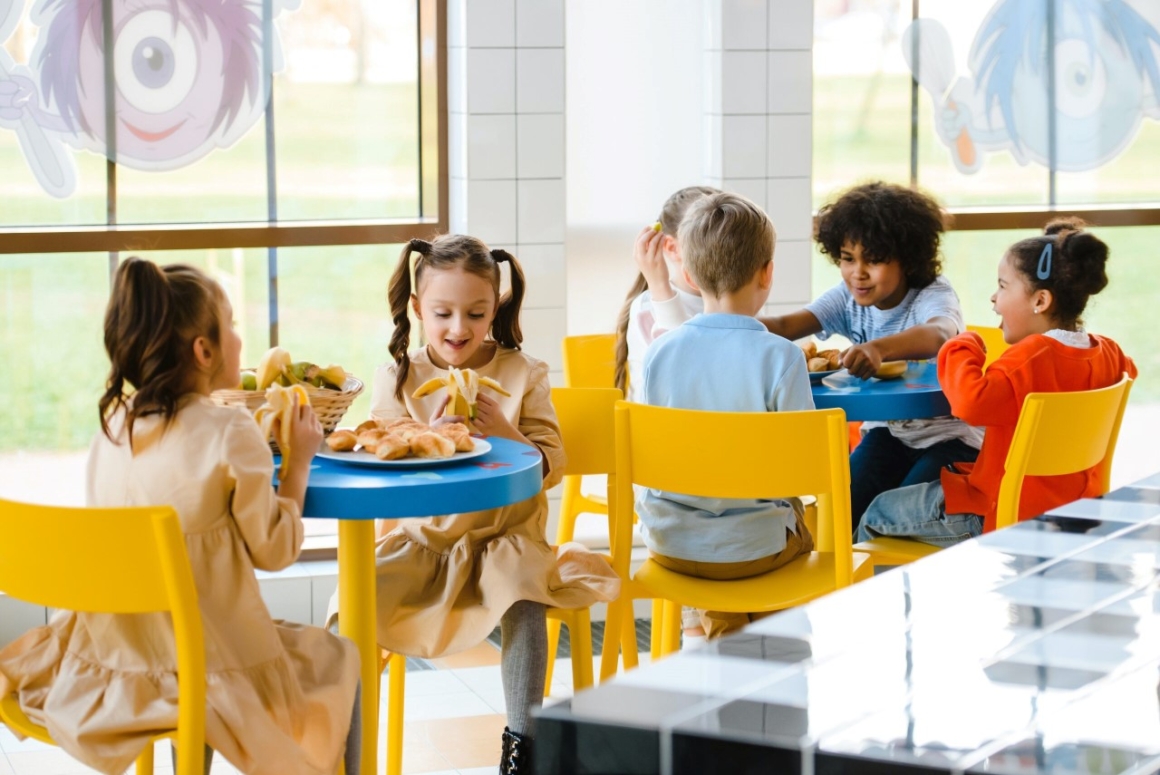
Choosing the right school in Spain while abroad can be overwhelming because there is so much that is not clearly explained. If you have been checking online the schools in your future area, your head must be buzzing with letters such as ESO, CEIP, IES and words such as concertado, which we dealt with on the guide for expats about the school system in Spain. Also, you may have noticed that the school websites are far from informative and that prices are hard to come by. So, let’s clarify this whole mess, shall we?
Information is key to make a good choice, so on top of our explanation about the Spanish school system, I’ve answered a list of questions that I had when I started looking for schools, plus some I asked latter. I believe it will help ease your mind and your kid’s way into Spain 😉 If you have more doubts, please write them in the comments, and I’ll do my best to answer!
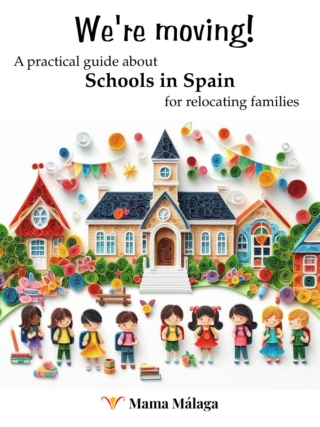
We wrote the Book
After listening to so many parents with the same doubts as we had before moving, we decided to make a book with all the information we got from schools, other parents, official sources and our own experience with both private and public schools in Spain. And then we went further, looking for all the support available for families with or without special needs, language and cultural adjustment tips and a lot of specific vocabulary. Get it now – it will save you a lot of time!
What are the differences between private schools, concertados and public schools?
Private schools are paid schools, whose monthly price ranges from 500 to 900 euros for a regular school and from some 700 to 1500 for an international school (I am writing on January 2023 and the schools I checked are all in the Malaga province). They usually do not display their price on the website, but you can get this information if you e-mail them.
If you do, make sure you inform the age and grade of your kids, as prices may vary from one school year to the next. It is easier to enroll kids in a private school than in the public or concertados, as private schools do not follow the enrollment procedures that the other school types do.
A Colegio concertado is a private school that receives subsidy from the Estate. They are more affordable than private schools – in the range of 200 or 300 monthly – and follow the same enrollment procedures that a public school does. They tend to be very popular and highly sought after.
Public schools are free of charge. They are subdivided in CEIP – Centro de educación infantil y primaria, which offers pre-school and elementary levels; CEP – Centro de educación primaria, which offers elementary level education, and IES – Instituto de educación secundaria, which offers ESO (Educación Secundaria Obligatória – mandatory middle school education) and sometimes also the baccalaureate or technical education. The enrollment process in public schools is the same, regardless of it being a CEIP, CEP or IES.
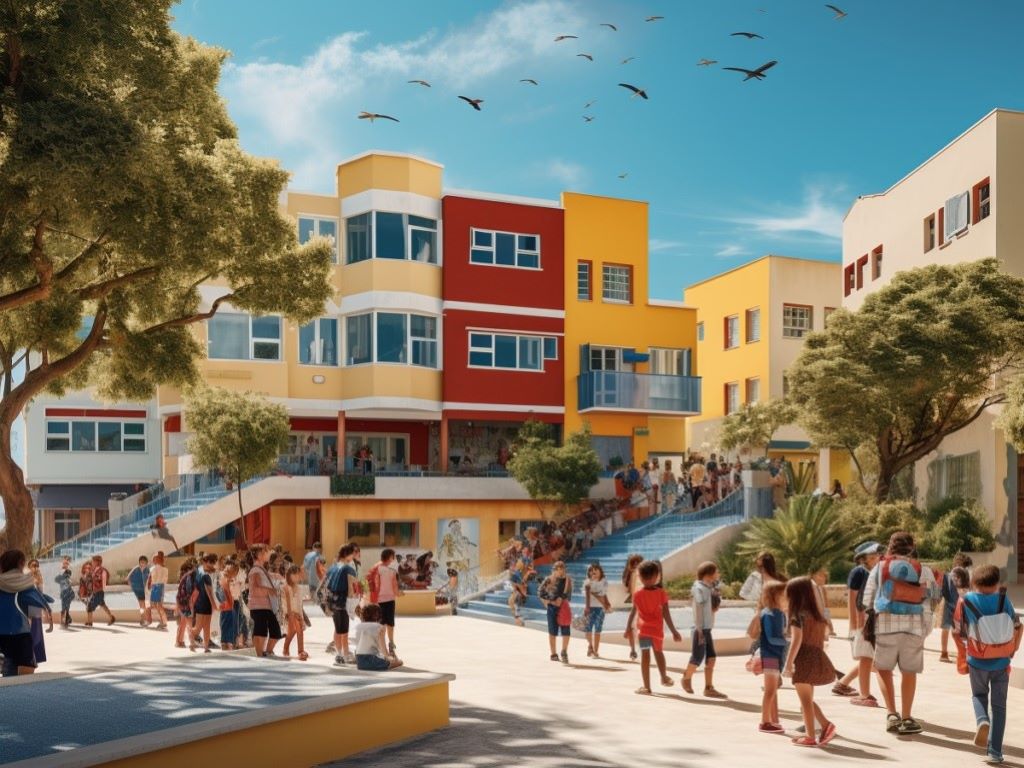
All schools must follow the guidelines of education for both their Autonomous Community and the Ministry of Education and vocational/ professional training of Spain. Now let’s look deeper into the schools in Spain and deal with some of the main questions to weight in when choosing the right school for your family:
Are private schools better than public schools?
Well, I asked this question to a few fellow parents of kids in private school while Kiddo was attending one, and the most common answer was that the quality of education provided by public schools is good, the problem is that the kids that frequent this type of school can have a difficult background – refugees and other foreigners, I think is what they meant – and can get a bit violent. They believed public schools would have more bullying.
Private schools also tend to have less kids per classroom, which may help tackling bullying and increase the time dedicated by the teacher to each student, and to have longer study hours per day. This point actually, may be the key: because the public school’s day finish early (at 2 pm or at 4 pm, at latest), the choice of a private school may be a way to conciliate working hours with the time of taking the kid from school. Check our experience with schools in the Costa del Sol for more on the topic, and to see why I’m happy with the public school.
How long is the Spanish school day?
Another big difference between private and public schools has to do with the number of hours kids stay in the school. It is worth checking with each school what are their hours, but from my experience, at least in Malaga, private schools tend to go from 9:00 to 17:00, with the possibility of extending it to 18:00 with some extra class, while public schools go from 9:00 to 14:00 with the possibility of extending it until 16:00 if the parents request and prove that they both work outside their home (yes, my dears, what a discrimination of people that work from home, right?).
I believe the duration of the classes may be one of the reasons why some parents choose a private school over public schools, because when both parents work it may be difficult to take the kid from school at 16:00.
Also, some schools offer the possibility of starting earlier, around 8:00 (convenient for parents that need to be at work at 9:00). I’m not sure if kids have some class/ breakfast during that extra hour; I believe they just play, or it may vary from school to school. If you need this service, don’t forget to ask your prospective schools if they have it and what the kids will be doing.
How long is the school year?
The school year goes from September to June, with winter vacations happening from around Christmas to around the Dia de Reis (January 6th), a much-celebrated date in Spain. In Malaga, there are also two weeks off: the Semana Blanca, which is the week that contains February 28th (Andalucía Day) and the Holy Week in March or April. Schools follow the school calendar set by the Autonomous community they belong to, but there can be small variations from one school to another.
Related post:
Malaga School Calendar 2024/25
Do schools offer lunch in Spain?
Yes, they do. But there are some caveats here. Private schools offer the choice between paying extra for the kid to eat there or not paying and having to take the kid out of the school to go eat at home every day. Public schools offer their comedor (something like ‘eatery’) for kids whose parents request it and (once again) can prove that they work outside their homes. Lunch in school is not something to be taken for granted in Spain!
I believe that in both cases the food offered is of good quality, as the dieta mediterranea (Mediterranean diet) is something schools and Spanish people overall are very proud of (and with good reason). Our kid ate at the private school and though he hated the food, because he doesn’t like to eat fish, they did force him to eat it all. A bonus. He doesn’t have lunch in the public school he currently attends – I pick him up and feed him at home.
How do schools deal with religion?
This varies from institution to institution, so it is a good question to help you narrow down your choices. Some (many!) private schools are religious, mainly catholic, and so they may teach their beliefs as a fact. They can’t escape teaching science in parallel, and I don’t mean that the religious schools will try to deny evolution, for instance – Not at all! But kids may have to pray, and it will be a catholic environment.
Public and some private schools let the parents choose whether their kids will go to religion classes or to values classes. Values is a secular subject, more related to ethics and civil life – such as the importance of recycling and how to safely cross the street – and behaviors that should be avoided, such as those that could seem fun to a child, but others would consider bullying.
Can I homeschool my kid in Spain?
Yes, it is possible. Seems to be something recent, tough, but I know an institution that can help you with that, if you so wish: ALE (Asociación por la libre educación – association for free education) is a Spanish non-profit that aims at helping homeschooling families.
Does the quality of the public schools vary from one to the other?
Yes, it seems so. Schools in less affluent neighborhoods tend to have a higher volume of bullying, according to the parents I spoke to.
What else do the schools offer?
Some schools – private, concertado or public – offer transportation, but this can vary from one year to the next. Some schools offer extra classes of dance or foreign languages as well. The public schools may offer reinforcement classes for kids that need so – in Kiddo’s school, it happens from 16:00 to 18:00 twice a week; they also offer Spanish as a second language during the regular classes’ hours for him and other foreign kids of similar age.
Schools also include some special tours – Kiddo has gone to a science fair, a farm, and the theater with his public school coleagues and teachers. In addition, at least some public schools have special programs for autistic kids. You should check with your prospective schools to see if they offer something extra, as it can vary.
Do schools offer sports?
Yes, they have regular physical education classes. But sports in Spain goes beyond schools; the infrastructure dedicated to Sports is amazing. Check the sports post to have your jaw dropped.

Is it better to choose a school that teaches in English, in Spanish or bilingual?
Oh, the tough one. This depends on your plans for the future (are you staying in Spain just for one year or for the whole life?) and on the kid’s age and level of responsibility. I think if your family is coming to stay in Spain, it is quite important that your kids adapt by learning the language; on the other hand, going straight to a full Spanish school can make their adaptation quite harder.
Maybe a good compromise would be to enroll them in an English-speaking school while at the same time having them studying Spanish in the afternoons? I believe this could work well for responsible teenagers that understand the need to learn the local language. On the other hand, for small kids (let’s say, up to 5 years old) the Spanish school would be great – they would speak Spanish better than us old fellas in no time. But what about in between, say, from 6 to 12 yo? That is where my Kiddo lies. Check our own experience with schools for more on this important topic.
How can you choose the right school for your kids?
Ok, now that you know the basics about schools in Spain, the first thing to do is to check google to find out the schools in your future area. That is, supposing that you have already decided where you are moving to; if you didn’t, decide this first or check the schools of several areas.
Google Maps helps on this too; you can look there for a more visual selection. You’ll be able to differentiate which of those schools are private and public because the public have names that include CEP, CEIP or IES. Make a list of the possible schools, divided between private and public, according to the age of your child. For instance, if your kids are teenagers, you can ignore all the CEPs and CEIP – your kids are past that age; if you are set to put them in a private school, you can ignore IES as well.
Once you have your list, it is time to write to those possible schools. Find their e-mails on their (usually very limited) websites. Explain when and where you are coming from and the kids ages and grades; ask all the questions you may have – and I figure that, after reading this article, you have more questions than before. Good; it means your e-mail will be much better.
You may be interested in asking about prices, documents required from foreign students, if they teach only in Spanish or also in English (even if the school says they are a bilingual school; check our experience on that), the school hours, if they offer lunch and/or transport; if they teach religion, how much time the kids are expected to spend doing homework each day; if they use the ABN method and if they offer extra classes for non-Spanish speaking students, for example.
